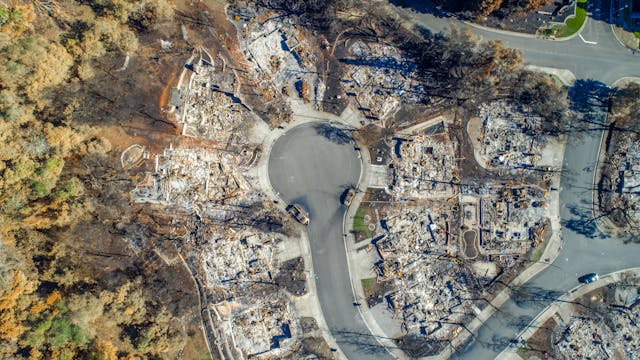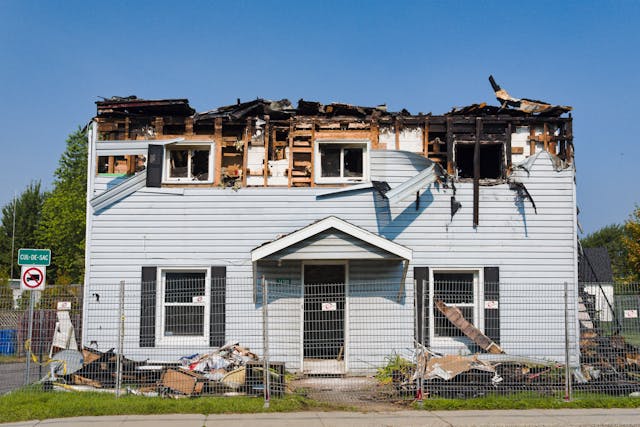As the state of California gets ready for its annual wildfire season, homeowners are once again reminded that their houses play a big role in fire safety, especially the roof of their house. Although Northern California received a lot of rain in March and also has some snow cover, it has only a temporary barrier against fire spread until May; the situation is likely to change. The conditions are set to become warmer and drier from late spring through to summer, thus increasing the likelihood of fires in low-lying areas, especially in the oak woodlands outside the reach of the marine layer. On the other hand, Southern California is in a worse situation. The current drought conditions on the South Coast and in the Colorado Desert, coupled with the herbaceous growth during the late-season rains, create a high risk of fine fuels that will dry out and which will be highly combustible. This increases the risk of large fires in mountainous areas with below-average rainfall. Given the increasing threat of wildfires across the state, the decisions that homeowners make concerning the roofing materials they choose, especially for those who are rebuilding after the recent wildfires or for new homeowners, can be crucial. Rescue Roofer has explained how wildfire risk influences roofing decisions in Orange County, what materials provide the best protection, and how to select roofing options that comply with the building codes.
The Increasing Danger of Wildfires in California

Wildfires remain a major threat to the communities of California, and data from CAL FIRE only serves to stress this fact. As of April 7, 2025, 653 wildland fires throughout the state have consumed 59,851 acres of land, a huge rise from the 462 fires and 341 acres burned in the same period in 2024. Thus, the present year's early wildfire activity has far exceeded the 5-year average of 2,441 acres, and the trend is an increase in the volatility of fire conditions, impacts on the residential areas and infrastructure, and the frequency of wildfires. However, California has very stringent building codes, especially in high-risk fire areas requiring fire-resistant materials and construction methods. Homeowners are also affected by increased insurance premiums or even being denied coverage in high-risk areas. Given the increasing duration and intensity of fire seasons, it is important to make informed, fire-aware decisions, starting with the roof of your house, to safeguard your house and your investment.
Roof and Wildfire Strike: The Relationship That Matters

Roofs are most often the first point of attack or the first point of failure when wildfires occur. The most common way homes catch fire during a wildfire is from wind-blown embers that can travel ahead of the main fire and land on roofs, in gutters, or near eaves. If the roof is made of flammable materials or lacks ember protection, it can easily catch fire and put the whole building at risk. Small gaps between shingles or exposed underlayment allow embers to smolder without detection until the flames take hold. In past California wildfires, older wood shake roofs or poorly maintained roofs that ignited like kindling destroyed entire neighborhoods while Class A-rated fire-resistant roofs stood. These examples show that the type of roofing material you select will determine whether your house will make it through a wildfire.
Fire-Resistant Roofing Materials: What to Know

Roofing systems are classified according to their fire resistance into Class A, B, or C, with Class A being the best. Class A-rated materials are now mostly mandated in California building codes in fire-prone zones to prevent ember ignitions.
Some of the most common fire-resistant roofing materials are:
- Asphalt Shingles: These are the cheapest and most popular type of roofing shingles. When installed with the right underlayment, asphalt shingles can get a Class A rating and thus offer a safe and cost-effective solution for homeowners who require safety.
- Metal Roofing: Metal roofs are very durable and not naturally combustible. They also tend to disperse sparks and not catch fire easily. Though they are light and easy to maintain, the installation cost can be high.
- Clay and Concrete Tiles: These are naturally fireproof, tough, and have excellent thermal properties. Concrete tile roofs usually meet Class A requirements but are heavy and require more structural support.
- Slate Roofing: Due to its high density, slate is a non-combustible and very durable material. This high-end product may cost an arm and a leg, but with proper care, it can last for a hundred years.
- Treated Wood Shakes: Although traditional wood shakes are very combustible and not recommended for Orange County homes, treated wood shakes with fire-retardant chemicals can achieve a Class B or even a Class A rating. However, they are expensive to maintain, and their fire resistance will decrease faster, especially during harsh climatic conditions.
In selecting materials for a roofing project, costs have to be compared with performance. However, even though the cost of materials like metal and tile is higher than that of asphalt shingles, they are more durable. They may be eligible for insurance discounts or local fire safety rebates. Although the initial cost of a Class A roof is high, it can give you peace of mind and may also help save your house from the risk of a wildfire.
Building Codes and Local Regulations
California has specific building codes that homeowners with properties located in fire-prone areas must follow to minimize the risk of wildfires. Wildland Urban Interface (WUI) areas, where the wildland and the urban regions converge, are governed by specific WUI building standards per the California Building Code Chapter 7A. These regulations are put in place to enhance the ability of a home to withstand a wildfire by requiring materials with a high ignition resistance on the roof, walls, vents, and eaves. This means that Class A fire-rated roofing is mainly allowed for roofing projects and specific installation rules and features that will prevent embers. Before beginning a roofing project, you must find out whether your home is situated in a particular fire hazard severity zone. This can be achieved by checking CAL FIRE's online tools or contacting your local building department. Knowledge of these requirements ensures that you comply with the codes and regulations and increases your house's chances of being saved in a wildfire.
Roofing Design Considerations for Fire Safety
The design of a roof, other than the type of material used, is also very important in terms of fire safety, regardless of whether the house is situated in the WUI or in the urban area. Some roof pitches are likely to collect embers, particularly those that are flat or have a low pitch, since the wind can blow embers onto the roof, and the embers can ignite the dry debris. Eaves and soffits must be well-designed and protected, as they are often the entry points. Soffits should be enclosed, and non-combustible materials should be used to prevent embers from entering the attic space. The vents will be covered with ⅛ inch mesh screens or ember-resistant designs, and the gutters will be fitted with guards to prevent leaves and twigs from accumulating and providing fuel to the fire. Also, no one should ever underestimate the role of defensible space, clearing flammable materials and plants up to 30-100 feet from the house to reduce the chances of ignition and to give the firefighters a better chance to save the house.
Insurance and Incentives

The choice of roofing material will have a direct implication on the cost of your house insurance. Many insurance companies in California are now taking into consideration the fire safety features of a house when assessing the risk and providing better terms and lower premiums for homes with Class A-rated, fire-resistant roofs. There could be local or state incentives, rebates, or grants to assist in the cost of replacing with fire-resistant materials, especially in the high-risk zones. For example, the California Department of Insurance's "Safer from Wildfires" program provides the steps that meet the insurance discounts, including the installation of fire-resistant roofs. Furthermore, some insurance companies offer premium reductions for homes with fire safety features; for instance, houses with Class A fire-resistive roofs can get 10–20% premium reductions. Apart from insurance discounts, various local and state programs can be used to defray the costs of fire-resistant materials. For instance, the California FAIR Plan offers discounts to homeowners who make their homes more resistant to wildfires. Homeowners should talk to their insurance agents before embarking on a re-roofing project to know if they can enjoy any possible discounts on the premiums and incentives.
Final Tips for California Homeowners:
Suppose your current roof is aging, damaged, or built with outdated materials. Consider replacing it entirely or upgrading key components to meet WUI codes and modern fire safety standards. Choosing a licensed roofing contractor like Rescue Roofer, who is experienced with WUI-compliant projects, is critical. They will understand local regulations and use materials and methods designed for wildfire resistance. Finally, regular inspection and maintenance are as important as the initial installation. Regular clearing of leaves, branches, and debris from your roof and gutters, inspecting vents and flashing, and ensuring your defensible space stays clear can significantly reduce your fire risk and help keep your home compliant year after year.
The current state of your roofing demands immediate attention from Rescue Roofer because wildfires will most likely at some point threaten your property. Rescue Roofer stands ready to perform complete inspections, which will help you take the necessary protective actions against wildfire threats that affect your home.

